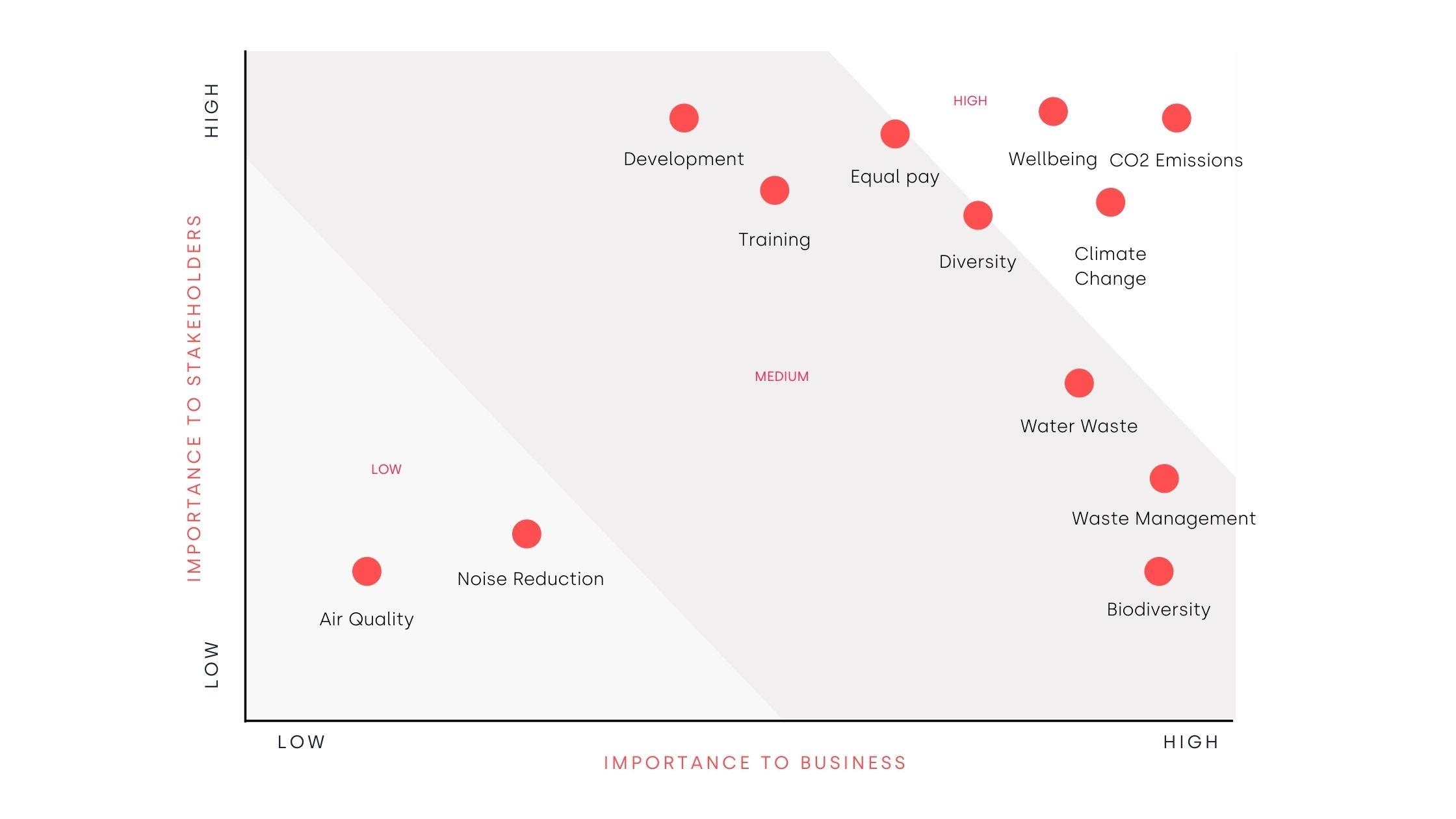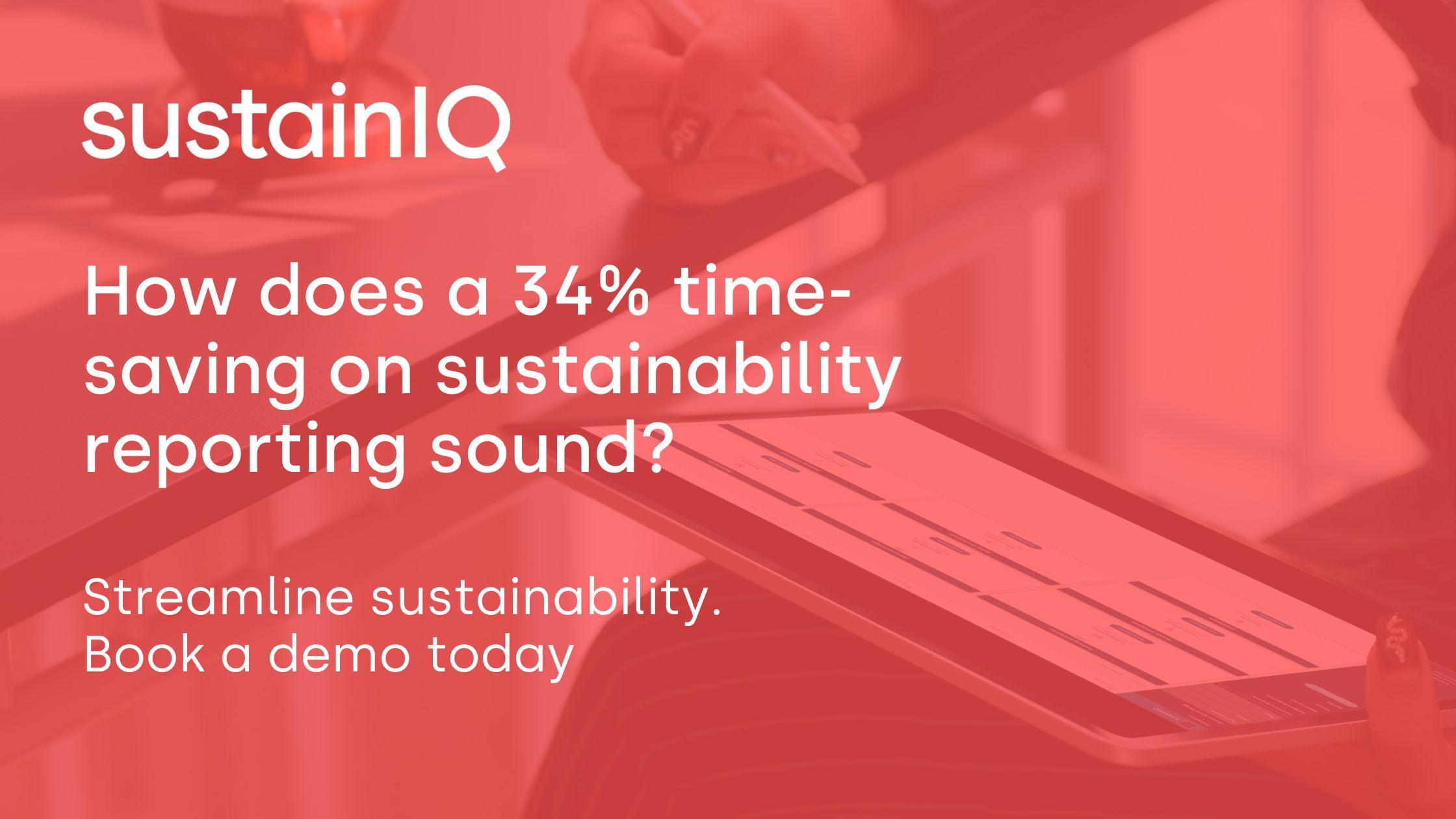Sept 12, 2022 | Gillian McKee

The concept of materiality within business has been around within accounting for many years, but is now often linked with Sustainability or ESG reporting. In fact, materiality assessments are understood within the sustainability world, to be the ‘backbone’ of reporting.
If you're unsure what materiality is, why not read our blog on it here first.
The reason for this lofty claim is that, done well, a materiality assessment will provide solid information about the issues and topics your business needs to address. It will provide valuable insights and a steer on your strategy. The key is knowing what you want to get from the process and asking the right questions from key stakeholders. It’s a process that companies are sometimes tempted to skim over because it takes time to engage effectively with stakeholders. Too often, companies aren’t willing to invest that time, choosing instead to make assumptions about what matters to those stakeholders – assumptions that, if unfounded, can send them down the wrong path and waste even more time in the long-run.
Much of the agenda around sustainability or ESG is about understanding and managing the risks your business faces. What that means in the context of materiality is “an environmental, social or governance event or condition that, if it occurs, could cause an actual or potential material negative impact on the value of the investment”[1]
It is increasingly obvious that climate change poses risks to businesses across all sectors, but focusing on that to the exclusion of other issues is a risk in itself. Fully understanding what those other risks are, for your sector in general and your business in particular, will be greatly helped by undertaking a materiality assessment. So, let’s take a look at what’s involved, step by step.
Step 1: Agree purpose and scope
You’ll get the most from your materiality assessment if you’re clear at the outset what you plan to do with it. Is it to help develop your ESG strategy or to support sustainability reporting? Is it for wider corporate strategy? If it’s intended to support reporting, is there a framework you plan to use? For some frameworks, such as the Global Reporting Initiative (GRI), a materiality analysis is a critical component of the approach. Being clear at this stage can help keep you on track throughout the process.
A materiality assessment can also be a vital tool to help identify what you need to measure, monitor and report on within your business, allowing you to unearth valuable data hidden within your operations.
Step 2: Identify stakeholders
It should all start with identifying the key stakeholders for your organisation. This should include any party with an interest in or who can reasonably expect to be affected by your activities, products or services or whose actions can potentially impact on your ability to implement strategy and achieve your objectives.
Who has an interest and stake in your company? Some obvious categories are employees, customers, suppliers and investors. You may also consider government, regulators, NGOs or interest groups, and media amongst others. If you already have a focus on stakeholder engagement, this stage will be relatively quick and easy.

Step 3: Identify the potential issues
Think about the areas where your organisation could face risks or where you know it impacts on society, the environment and the economy and categorise these under broad headings. Consider topics such as:
Environment – climate risk and emissions, waste management, resource use, nature and biodiversity
Social – employee wellbeing, talent development, diversity & inclusion, community engagement, human rights in supply chains, living wage
Governance – transparency and openness, markets and corruption, leadership integrity and diversity
Economic – profits and financial stability, competitiveness, supply chain and procurement
When you’re thinking about your impact on these issues, think about actual vs potential, positive vs negative, direct vs indirect and short-term vs long-term.
Produce a long-list and refine this through discussion at senior level to the list of topics and issues you want to consult stakeholders on, keeping in mind the purpose and scope of your assessment.
Step 4: Survey your stakeholders
Next, decide how you’re going to engage with stakeholders to solicit their feedback. Well-designed surveys can be a useful first step in engagement, offering an easy way for stakeholders to provide their views and for you to analyse the results.
Ask stakeholders how important the material topics identified at Step 3 are to them in their relationship with the company. This works both internally and externally. Don’t forget to offer them the chance to highlight topics you may have missed, but which are important to them.
Step 5: Prioritise importance
One key aspect of a materiality assessment is understanding how important an issue is to your stakeholders in light of the degree of influence those stakeholders have on your business. The other key aspect is prioritising how important each topic is to the organisation. This stage is critical to identify which issues require more emphasis and action and are therefore more ‘material’ to the business.
Decide on your methodology for scoring the issues. A scale of 1 to 10 allows enough scope to prevent the topics all being clustered together in the final assessment.
Internally, involve all relevant departments in assessing the relative priority of the issues identified at Step 3. Externally, the stakeholder feedback provided in Step 4 will indicate what issues are a priority for them.
For each topic, score as follows:
1. Its importance to each stakeholder group
2. The influence of that stakeholder on the issue
3. The importance of that issue to the business
The final step is to agree a threshold for the most material issues that you will include and take action on.
Step 6: Map the results and get senior buy-in
By now you’ll know what issues matter to your stakeholders, you’ll have considered the topics that (could) impact most on your business and you’ll have analysed and prioritised the results. You’re now ready to ‘map’ those results to create a visual representation on a ‘materiality matrix’. This will have two axes:
X: Impact on/importance to the business
Y: Importance to stakeholders
It might look something like this example, but in truth there are many templates and approaches out there, so choose one that suits your business.

Get your senior team to review and sign off and you’ve got a strong foundation on which to build your strategy or create your report – depending on what you scoped out in Step 1.
Step 7: Review periodically
This is an important piece of work, but it’s not a one-off exercise. Your materiality assessment should be reviewed and updated periodically to ensure it is still fit for purpose. While there’s no set review period, there are some guiding principles that might trigger a review, such as a significant change in your business or in your operating context.
Regular tracking of the data that underpins your ESG or sustainability strategy will help ensure you’re aware of potential key triggers and a regular programme of engagement with stakeholders will help ensure you’re aware of emerging issues and don’t get blindsided.
Using your materiality assessment to establish the parameters of your ESG activity and the data you need to collect will ensure you are approaching sustainability with rigour and robustness. All you need to do now is choose the best tool to support that data collection process and ensure you can report with authority.
That’s where SustainIQ can help, providing a fully integrated data capture and reporting tool to ensure your most material issues are measured and monitored right there at the heart of your business.
If you need help reporting against your performance in material areas, get in contact with us, or drop an e-mail to [email protected] to see how SustainIQ could work for you.

[1] According to the Sustainable Finance Disclosure Regulation (SFDR) SFDR - EUROSIF
